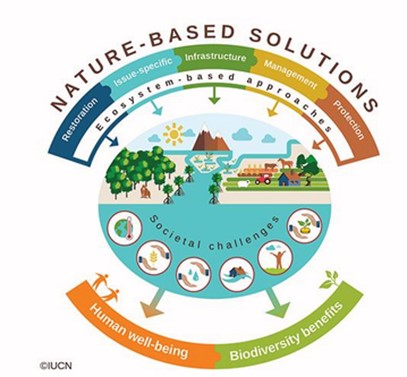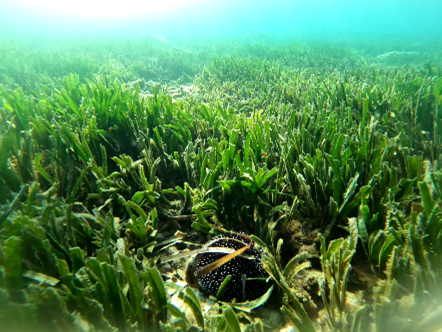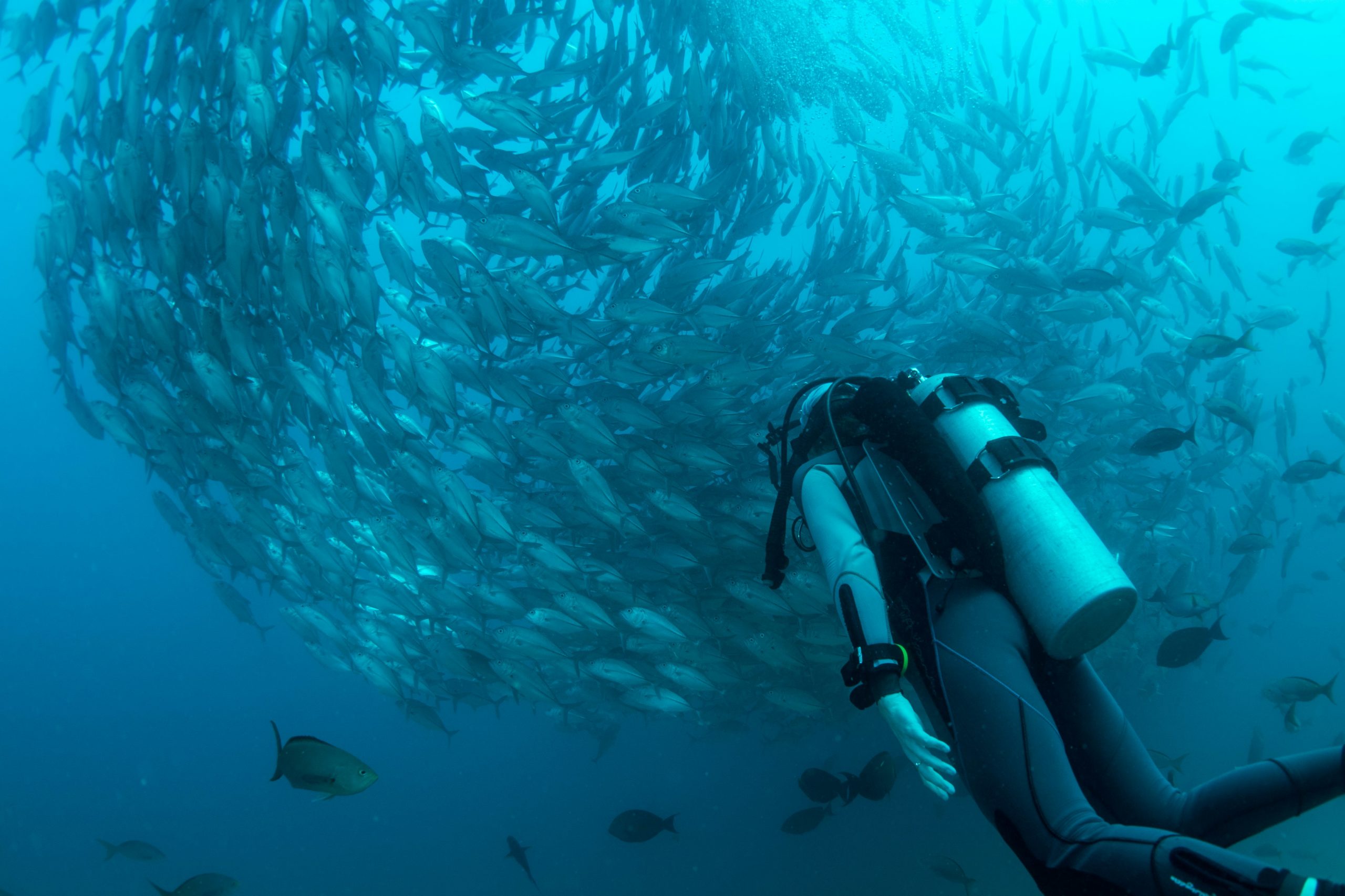
Harnessing Nature-based Solutions for Sustainable Marine Conservation
The oceans play a crucial role in sustaining life on Earth, providing a multitude of ecosystem services essential for human well-being and environmental health. These services include recreation and tourism, flood control, storm protection, breeding and nursery habitats, and carbon sequestration, among many others.
By Natalia Preciado Mancera. Environmental Engineer. Head of Marine Conservation at CTN and María Crespo Mauriz. Marine Conservation and Restoration Technician. Research Technician at CTN.
August 26, 2024
NBS: Solutions Inspired and Supported by Nature
Coastal zones are home to nearly 2.75 billion people, or over one-third of the global population, living within 100 km of the shoreline. Of these, almost 1 billion reside within just 10 kilometres of the coast. Human activities in these regions enhances impacts including habitat degradation, pollution an overexploitation, and are leading to substantial biodiversity loss. Meanwhile, broader marine ecosystems face increasing threats from global warming and land-based activities, manifesting as ocean acidification, rising sea temperatures, pollution and the spread of invasive species.
Nature-based Solutions (NbS) have emerged as a powerful approach to address these ecological, social, and economic challenges by collaborating with nature, fostering a resource-efficient, greener, and more resilient economy and society (Fig 1). According to the European Commission, NBS are defined as “solutions that are inspired and supported by nature, which are cost-effective, simultaneously provide environmental, social and economic benefits and help build resilience. Such solutions bring more, and more diverse, nature and natural features and processes into cities, landscapes and seascapes, through locally adapted, resource-efficient and systemic interventions”.
Nature-based Solutions can be classified in different categories, being the degree of human intervention and the extent of incorporation of natural features and processes.
Types of Nature Based Solutions
Nature-based Solutions can be classified in different ways. The most common classifications could be, on one side, the degree of human intervention, and in the other side, the degree of incorporation of natural features and processes. Here are the main types of NbS as detailed in Marine nature-based solutions: Where societal challenges and ecosystem requirements meet the potential of our oceans by Christian Riisager-Simonsen one of the contributors to the TRANSEATION project:
- NbS supporting climate change mitigation and reversal of environmental degradation and biodiversity loss, for example the establishment of Marine Protected Areas (MPA), or the protection and rebuilding of stocks of marine fauna.
- NbS that improve the multifunctionality of managed marine ecosystems. Examples include ocean fertilization to stimulate phytoplankton production and the restoration of coastal habitats like artificial reefs and Posidonia meadows, improving food production and water quality.
- NbS which provide novel, restored or deliberately designed artificial marine ecosystems. This encompasses the introduction of new habitats to replace destroyed ones and enhance sustainable food production and disaster mitigation. This includes artificial reefs as well as marine eco-engineering.
Nature inspired designs applied in marine environments which reduce environmental pressures. This includes technical solutions based in a design inspired by nature to explain marine nature in a sustainable way. This can include the use of wind for propulsion in cargo ships or antifouling agents based on natural marine compounds.
Marine Nature Based Solutions Strategies
Marine NbS encompass a range of strategies aimed at supporting climate change mitigation, reversing environmental degradation, and biodiversity loss. Examples include establishing Marine Protected Areas and protecting and rebuilding marine fauna stocks:
Marine protected areas (MPAs) are a cornerstone of marine NBS. MPAs safeguard critical habitats, allowing marine life to thrive and ecosystems to recover. Research shows that well-managed MPAs can enhance biodiversity, boost fish populations, and increase the resilience of ecosystems to climate change as mentioned in Global conservation outcomes depend on marine protected areas with five key features.
Seagrass meadows and mangrove forests are other key players in marine NBS. These ecosystems act as carbon sinks, capturing and storing significant amounts of CO2. A study published in Nature Geoscience highlights that seagrass meadows can sequester carbon up to 35 times faster than tropical rainforests. Additionally, mangroves protect coastlines from storm surges and erosion, as some of coral reefs’ barriers demonstrating their vital role in climate adaptation and disaster risk reduction.
Artificial reefs represent another innovative approach within marine NBS. These structures mimic natural reefs, providing habitats for marine organisms and promoting biodiversity. Studies indicate that artificial reefs can support diverse marine communities and enhance local fisheries
Low-trophic aquaculture, advocating for sustainable marine farming practices that contribute to ecosystem health and resource efficiency. This is an innovative and sustainable approach to marine farming that focuses on cultivating species at the lower end of the food chain, such as algae, bivalves (like mussels and oysters), and certain types of fish. This method aligns with the principles of Nature-Based Solutions (NbS) by leveraging natural processes to enhance ecosystem health and resource efficiency.
Blue hybrid Offshore platforms are designed to generate renewable energy with ecological considerations, aiming to minimize environmental impacts while producing sustainable energy.
Implementing NBS requires a holistic and inclusive approach. Engaging local communities, policymakers, and scientists is crucial for the success of these initiatives. By integrating traditional knowledge with scientific research, we can develop effective NBS tailored to specific regional contexts.
Nature Based Solutions to prevent climate change
Nature based Solutions involve creating novel or restored ecosystems by introducing new habitats to replace destroyed ones, thereby enhancing sustainable food production and disaster mitigation.
They can also apply nature-inspired designs in marine environments, incorporating technical solutions based on natural principles to reduce environmental pressures, such as using natural marine compounds as antifouling agents.
For example, Posidonia oceanica meadows are crucial marine habitats that support diverse marine life, stabilize coastal sediments, and absorb carbon dioxide.

Posidonia oceanica meadows. (Photo by Tobias Gratzer).
And marine protected areas play a vital role in preserving marine biodiversity by offering designated spaces where human activities are regulated or restricted.

Marine biodiversity. (Photo by Pascal van de Vendel).
The Role of EU in Nature Based Solutions
The European Union is increasingly prioritizing Nature-based Solutions as key strategy to address these complex environmental challenges.
By aligning its policies with major frameworks such as Kunming-Montreal Global Biodiversity Framework, the EU aims to restore 30% degraded ecosystems by 2030.
NbS are also central to the European Green Deal and are integral to strategies such as the EU Biodiversity Strategy, the Adaptation to Climate Change Strategy, and the Farm-to-Fork Strategy. These solutions are well-supported by EU policies, including Natura 2000 sites and directives related to habitats, birds and water management, reflecting the EU’s robust legislative framework for sustainable ocean resource use and environmental protection.
But how are Nature-based Solutions being effectively implemented in today’s marine environments? Around the world, several inspiring projects demonstrate the potential of NBS to tackle pressing ocean challenges.
Inspiring NBS Projects
FutureMARES project focuses on developing Nature-based Solutions that provide environmental, social, and economic benefits while building resilience to change. Investigating interactions between climate change, marine biodiversity, and ecosystem services, it centres on habitat restoration, habitat conservation, and sustainable harvesting of marine resources. Conducted across five global case study regions, this project aimed to provide science-based policy recommendations to safeguard marine biodiversity and ecosystem services in a changing climate.
MaCoBioS Project (Marine Coastal Ecosystems Biodiversity and Services in a Changing World) is dedicated to developing cost-effective Nature-based Solutions for mitigating and adapting to climate change impacts. It explores the intricate relationships between climate change, biodiversity and ecosystem services in marine coastal environments. By examining the ecological condition of these ecosystems, MaCoBioS aims to understand how their ability to absorb climate change effects is influenced by their biodiversity and adaptative capacity.
DuneFront Project, aims to enhance coastal protection by combining natural dunes with man-made seawalls. This innovative approach, known as Dune-by-Dike Nature-based Solutions, represents a new generation of coastal defences that are sustainable, inclusive, and appealing.
The TRANSEATION project integrates Nature-Based Solutions (NbS) to enhance marine and coastal resilience while promoting sustainability. Key aspects include low-trophic aquaculture, which promotes sustainable marine farming and ecosystem health, and offshore platforms designed with ecological considerations to generate renewable energy with minimal environmental impact. Additionally, hybrid blue-grey infrastructures combine natural and engineered solutions for coastal protection and ecological enhancement. By examining and defining clear criteria for genuine NbS, TRANSEATION aims to establish a common roadmap ensuring sustainable, impactful efforts aligned with best practices in marine conservation and resource management.
Final Thoughts on Implementing Natured-based Solutions
One of the significant challenges in implementing Nature-based Solutions is clearly defining what qualifies as an NBS and what does not. There is often confusion and debate over the criteria that determine an effective NBS. To mitigate these risks and ensure the successful implementation, various standards, such as those developed by the IUCN, provide guidelines for designing and assessing projects.
Additionally, European initiatives like NetworkNature are playing a crucial role in coordinating and supporting NBS efforts across the EU, by managing collaboration through specialized Task Forces, it helps facilitate the exchange of knowledge and best practices, promoting more effective and sustainable NBS implementation across Europe.

